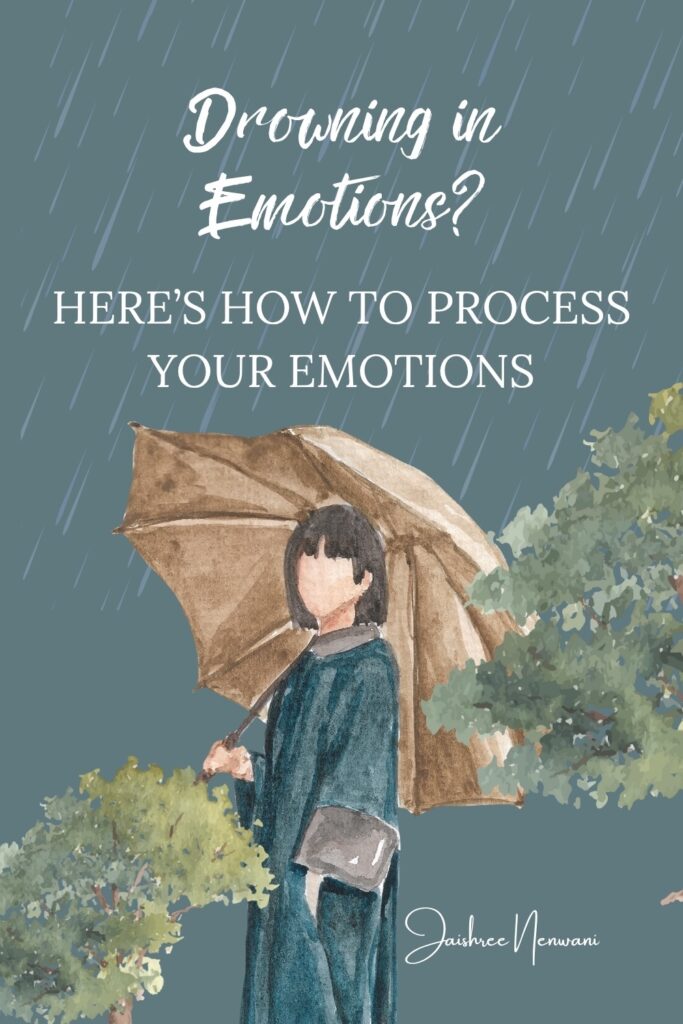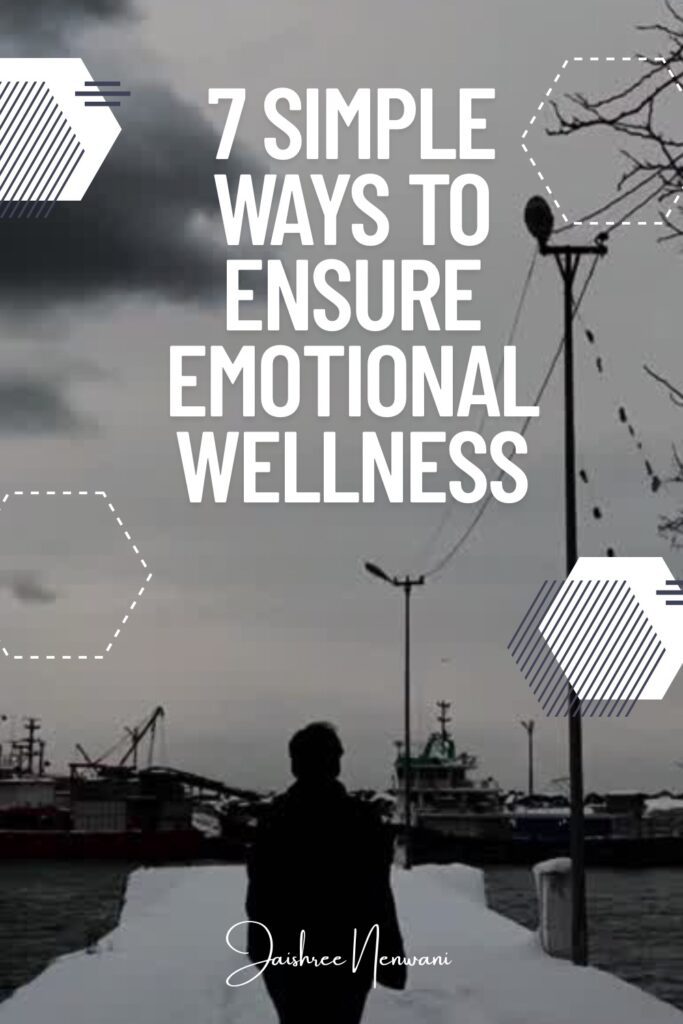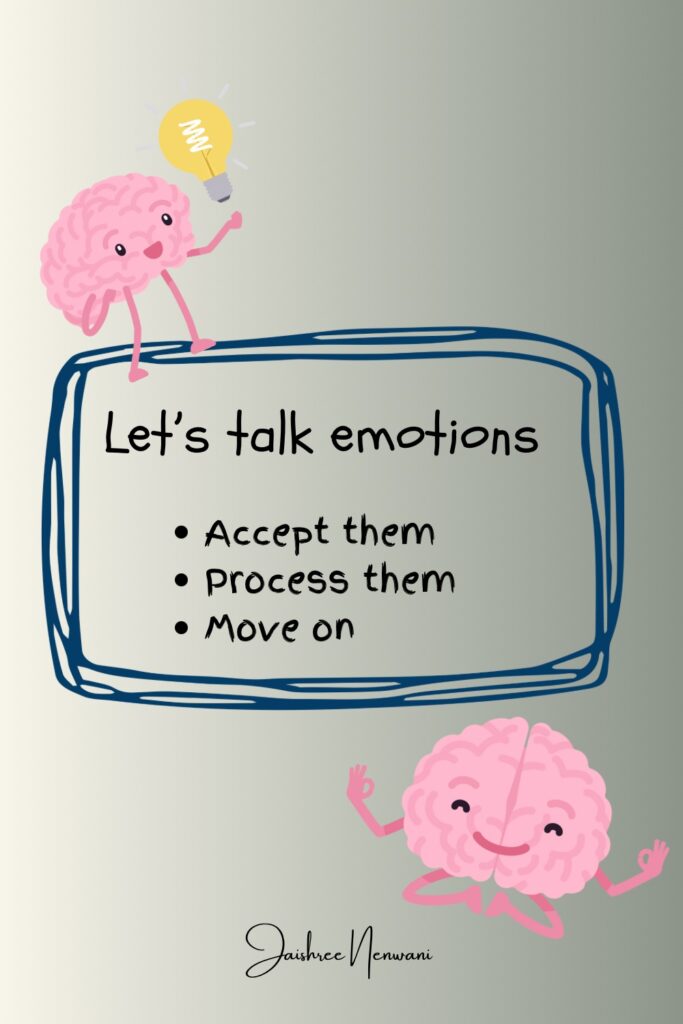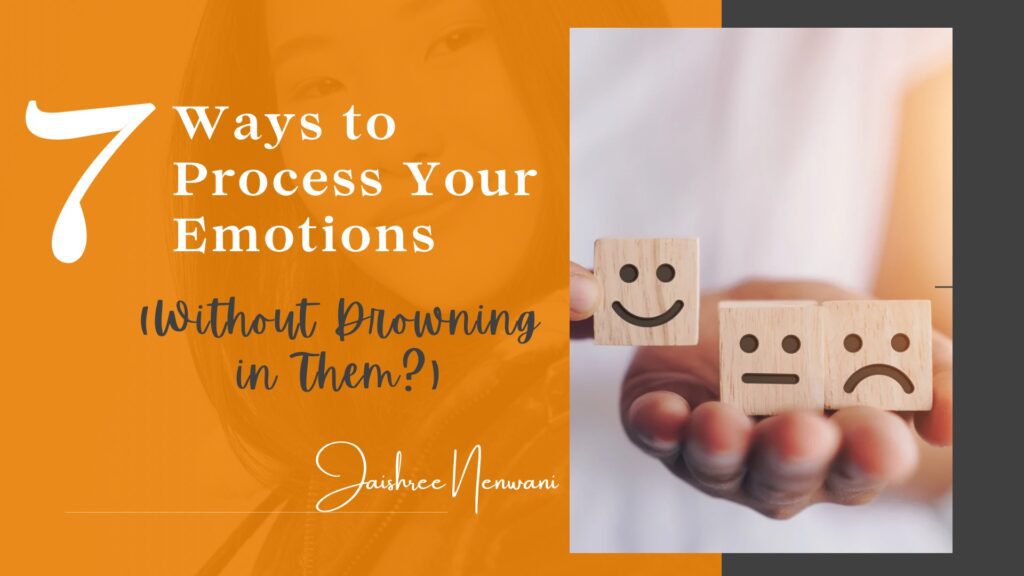There were times when I felt like I was drowning in emotions — stress, sadness, joy, and even anxiety, all pulling me down at once. This is such a devastating feeling. If you’ve ever felt the same, you know how overwhelming it can be. For a long time, I used to think, the best way to cope was to push my emotions aside. But that’s not true, I soon realized that ignoring them only made the waves hit harder later.
Whatever You Resist It Persists
Same goes with our emotions. Our emotions aren’t here to drown us. They’re signals, asking us to slow down and listen. Over the years, I’ve discovered gentle, healthy ways to process my emotions without getting swept away, and today I want to share those practices with you.
1. Acknowledge What You’re Feeling
The first step in processing emotions is admitting they’re there. When I say, “I’m anxious” or “I’m disappointed,” it takes away some of the power those emotions have over me.
Writing my feelings down in a journal is one of my favorite ways to stay afloat. Seeing them on paper makes them feel less like crashing waves and more like something I can manage. I have had magical experiences with penning down my emotions, it feels like a friend is listening to you without judgement. Give it a try- It’s simple and effective.
2. Breathe Before You React


When emotions start to flood in, I pause and take a few deep breaths. Breathing deeply signals my nervous system to calm down, which keeps me from sinking further into overwhelm.
One simple tool I use is the 4-7-8 technique:
- Inhale for 4 seconds
- Hold for 7 seconds
- Exhale for 8 seconds
It’s like grabbing a life raft in the middle of an emotional storm — it steadies me so I can respond thoughtfully instead of reacting out of panic.
3. Give Yourself Permission to Feel
For years, I judged my emotions. If I was sad, I told myself to “snap out of it.” If I was angry, I felt guilty. But I’ve learned that every emotion, whether calm or stormy, has a purpose.
Dr. Jill Bolte Taylor – a neuroscientist suggests a physiological emotion only lasts about 90 seconds. If an emotion persists longer, it’s because we are choosing to stay in that emotional state by thinking about or replaying the triggering event. So, if you are feeling anxious or angry, just give it at least 90 seconds to pass.
Now, when I feel heavy emotions, I remind myself: “It’s okay to feel this. It will pass.” Allowing myself to float with the current, instead of fighting it, makes emotions much easier to process.
4. Break Down Overwhelm Into Smaller Pieces
Sometimes, it feels like too many waves are crashing at once. When that happens, I ask myself: “What’s the one feeling I need to face right now?”
Breaking emotions into smaller pieces keeps me from drowning under their weight. For example, if I feel both anxious and angry, I deal with anxiety first — maybe through a walk or meditation. Once I feel steadier, I can handle the anger with clarity.


5. Move Your Body to Release Stored Emotions
I’ve noticed that emotions often get “stuck” in the body. That’s why I move — a short walk, stretching, dancing in my living room, or a bit of yoga.
Even 10 minutes of movement helps me shake off the heaviness. It’s like swimming to the surface when emotions feel too deep.
6. Use Mindfulness to Stay Present
Mindfulness has been a game-changer for me. Instead of replaying the past or worrying about the future, I anchor myself in the present.
One quick mindfulness practice I love:
- Notice 5 things you see
- Notice 4 things you hear
- Notice 3 things you feel
- Notice 2 things you smell
- Notice 1 thing you taste
This pulls me back to the shore whenever emotions threaten to pull me under.
7. Reach Out for Support When Needed
Journaling is my most trusted method of processing my emotions, however sometimes things are harder than we think. For a long time, I thought I had to navigate emotions alone. But reaching out — whether to a trusted friend, a therapist, or even a support group — has been one of the most powerful lifelines.
There’s no shame in asking for help. Sometimes another perspective is the buoy we need to keep from sinking.
Frequently Asked Questions (FAQs)


Q1: Why do I feel overwhelmed by my emotions?
Because emotions pile up when they’re not processed. Stress, unresolved issues, or lack of rest can make them hit like a tidal wave.
Q2: How do I process emotions in the moment?
Pause, breathe, and name what you’re feeling. Even saying “I’m anxious right now” lightens the load.
Q3: Can mindfulness really help with emotions?
Yes! Mindfulness anchors you in the present, so emotions don’t feel as overwhelming.
Q4: How long does it take to process emotions?
It depends. Some pass quickly; others take repeated practice like journaling, mindfulness, or therapy.
Q5: Is it unhealthy to suppress emotions?
Yes. Suppressed emotions don’t go away — they resurface as stress, anxiety, or even physical pain.
Q6: What if I feel too overwhelmed to even start?
Start small. Take one deep breath, write one word that describes how you feel, or share it with someone you trust.
Wrapping Up on How to Process Your Emotions
Processing emotions without drowning in them takes patience, practice, and compassion. I’ve learned that emotions are like waves — they rise and fall, but they don’t have to pull us under.
And remember, you don’t need to ride out the waves alone.
To help you on this journey, I’ve created a free Emotional Reset Toolkit packed with simple exercises and calming practices you can use anytime. Click below to download your copy and start feeling lighter today!




9 responses to “How to Process Your Emotions Without Drowning in Them?”
I think mindfulness is such a key point here. It’s easy to get swept away in your emotions if you can’t stay grounded.
This post is so beautifully written. Your insights on acknowledging our emotions and also for practicing mindfulness are helpful. Your gentle approach inspires strength, healing, and self-compassion.
Amazing post! Thank you so so much…I do some breathing exercises but I’ve never done your technique. I will do it and let you know how it goes. I am so excited to try it out.
After my husband passed a few months ago, it was very hard for me to express my feelings. It made me physically ill and I realized the stress was making me ill. Now I’m getting better as each day passes. Its not a good idea to bottle up your feelings
Thank you so much for these practical tips on how to tackle our emotions without drowning in them. Super helpful.
These are really fantastic tips to process your own emotions and ground yourself! Thank you for sharing them.
These are some wonderful tips here. Breathing techniques make a huge difference for me
I actually really enjoyed this and will most definitely use some of these tips in my own daily practice
I love this so much! Especially the reminder that emotions aren’t here to drown us, they’re here to speak to us. I spent years pushing them aside to keep moving, but it always caught up with me later.
Lately I’ve been learning how much alignment plays into this too… when I’m ignoring what’s true for me, my emotions get louder; when I’m living in alignment, they soften. Emotions are very useful messengers when you pause and truly reflect on what they are trying to tell!